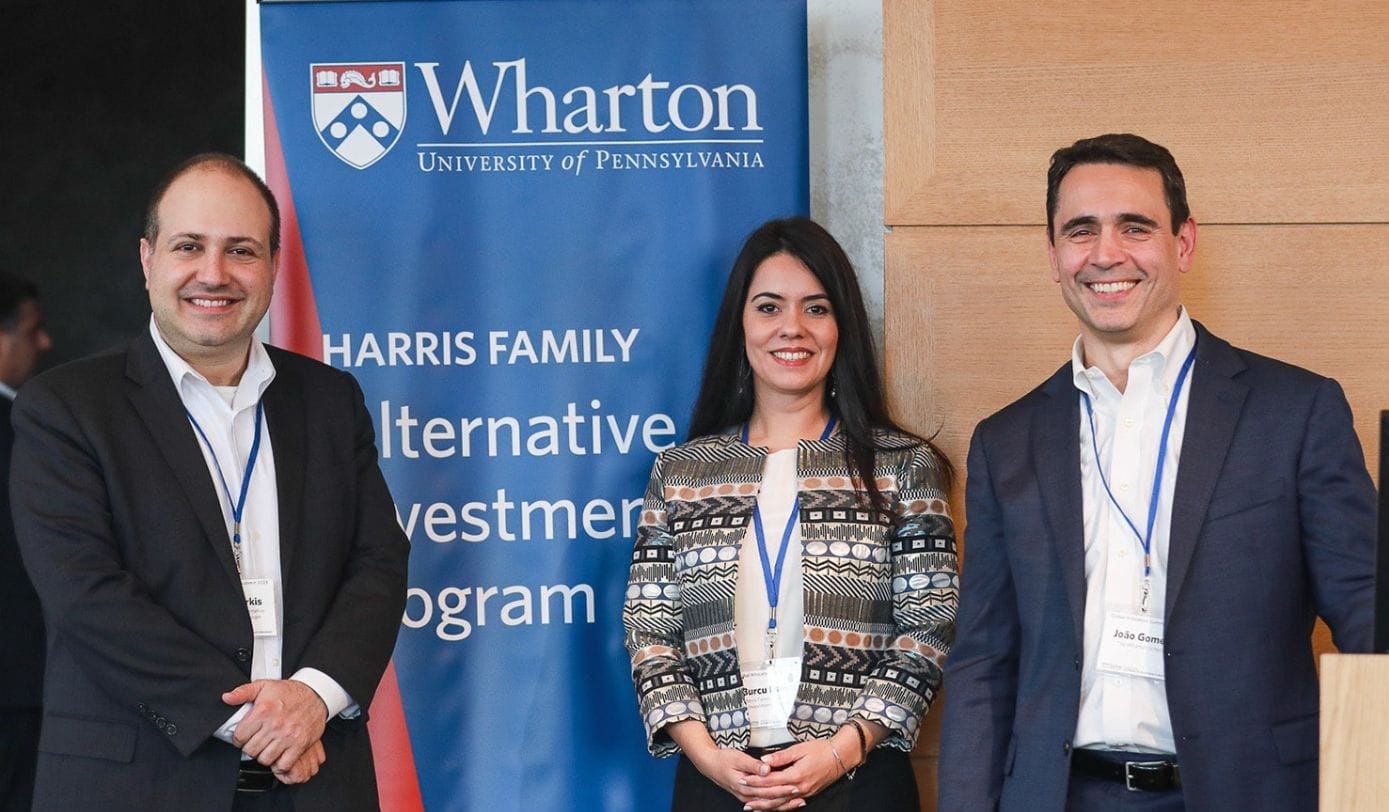The first-ever Wharton Global Allocators Summit brought together prominent limited partners for lively discussions and networking opportunities last month on the University of Pennsylvania’s campus.
“This Global Allocators Summit is another milestone in our commitment to the allocator community [and] provides a platform for thought leaders and practitioners to exchange ideas, share best practices, and explore innovative approaches in global allocation strategies,” said Burcu Esmer, in her introduction for the summit. Esmer is the academic co-director at the Harris Family Alternative Investments Program, the host of the day-long event. Attended by a highly selective audience of about 80 guests, the summit was held on May 19 on the top floor of Huntsman Hall, providing attendees with scenic views of the Philadelphia skyline.
The Harris Program is the University of Pennsylvania’s global research hub focusing on alternative investments, including private equity, venture capital, distressed investing, and hedge funds. The summit represented the return of high-caliber events from the program following the onset of the COVID-19 pandemic. The event included panel discussions on topics such as allocations in times of uncertainty, moderated by the Harris Program’s director of financial research, Ziad Sarkis WG16; alternative investment funds, moderated by Anna Nekoranec WG91, chief executive officer at Align Private Capital; and ESG investing, moderated by professor Kevin Kaiser, senior director of the Harris Program. The event also included presentations from Joao Gomes, Wharton finance and economics professor and senior vice dean of research, centers, and academic initiatives; and Matti Suominen GR97, Wharton visiting finance professor.

From left: Eric Newman, trustee and vice chairman of the pension funds of Stamford, CT, and Fairfield, CT; Stephanie Lindemann-Kohrs, global head of equity and funds at KfW Development Bank; and Amit Chandra, managing director at 57 Stars
In her introduction, Esmer also highlighted the efforts and enthusiasm of her team in organizing a “diverse and engaging [summit, reflecting the program’s] commitment to advancing the knowledge and understanding of global allocation practices.” Other participants included Carlos Obeid, chief financial officer of the UAE’s Mubadala Investment Company, who delivered the opening keynote address on global allocations given current geopolitical and economic conditions, and panelists Thomas Lee, executive director and chief investment officer of the New York State Teachers’ Retirement System; Timo Löyttyniemi, chief executive officer at the State Pension Fund of Finland; Ben Samild, deputy chief investment officer of the Future Fund, Australia’s sovereign wealth fund; James Smigiel, chief investment officer of SEI; and Stephanie Lindemann-Kohrs, global head of equity and funds at KfW Development Bank. Lindsay Rosner, senior portfolio manager at PGIM Fixed Income and a frequent pundit on Bloomberg Television, moderated the panel on fixed income, credit, and real assets.
In a panel discussion titled “Building Co-Investing, Secondaries, and GP Stake Programs” — which featured Peter Ammon, chief investment officer at the University of Pennsylvania endowment; Neha Markle W99 WG06, head of alternative investment partners private markets solutions at Morgan Stanley; Mo Saraiya ENG02 W02, executive director at GCM Grosvenor; and Mina Nazemi, head of diversified alternative equity at Barings — participants debated general partners’ use of NAV loans and subscription lines as financing tools in private equity buyouts and the corresponding impact on LPs’ returns. Panelists also discussed the presumed impact of the recent regional banking crisis, revolving around lenders that were at the forefront of providing general partners with these two financing instruments.
In his talk titled “The Effect of Rising Interest Rates and Inflation on Allocations,” Gomes shed light on the historical effects of elevated rates on various asset classes and provided insights on the expected implications of higher interest rates going forward. Using historical data, Gomes demonstrated that the key factor in evaluating the implications of rising rates was first to identify the underlying root cause of inflation. While higher rates due to inflation from elevated demand (as in the 2000s) tend to drive stocks up but bonds down, higher rates due to inflation from reduced supply (as in the 1970s) commonly drive both asset classes down.
According to Gomes’ assessment of the data, the U.S. is on track for a “soft landing” — a mild recession in the second half of 2023, inducing a decline in inflation and ensured by lower interest rates.


























